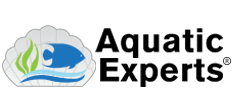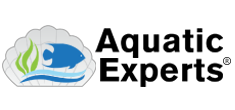 Every two years my outside service techs bring a dogface puffer back from one of our service clients whose front teeth had grown so long the poor fellow could no longer eat. We needed to perform this tooth trimming operation to keep him from dying of starvation.
Every two years my outside service techs bring a dogface puffer back from one of our service clients whose front teeth had grown so long the poor fellow could no longer eat. We needed to perform this tooth trimming operation to keep him from dying of starvation.
The dogface puffer is one of the species that commonly has a problem with overgrown teeth. In the wild puffer fish kill and eat crustaceans with hard shells - keeping their teeth worn down.They also grind their teeth on rocks and rubble as they attempt to remove algae. In the aquarium they may eat a nutritional diet but it usually consist of soft foods, and even if they eat the occasional crustacean, they just don't find rocks and rubble to wear their teeth down.
Here's the operation: We kept this puffer in a holding tank for a few days to calm him down. Our operating room was right in my store. We used clove oil, an essential oil expressed from the strong herb cloves, to anesthetize the puffer. Clove oil can be purchased at most heath food stores. The amount of to use varies according to how large and how sensitive the fish is to the anesthesia. For this puffer I mixed three gallons of saltwater taken from the puffers holding tank with 45 drops of clove oil. I mixed the water and got my operating tools together.
The tools consist of a dremel with a cutting wheel and a grinding bit. Also safety glasses are a must to protect your eyes. Next, the fish was carefully placed into the clove oil saltwater mixture. We watched the fish carefully and it took about 4 minutes for the puffer to be sedated enough to perform the operation. Steve, one of my staff held the fish gently and we placed a stick in the puffer’s mouth. So not to injure the fish I had another staff member, Paul, press a cotton swab against the puffer’s teeth to keep his head still.
The fish started to revive during the operation and so we placed him back into the clove oil mixture. After about a minute and half he was again sedated. We continued to grind the edges of the teeth to ensure they were smooth. Once the puffer’s teeth were finished the fish was placed into a bucket of clean water taken from his holding aquarium. As he became more active he was transported back to his holding tank and released.
Two days after its operation he started eating. After two weeks the fish was returned to his owner’s aquarium and is now doing great. Even though I am sharing most of the details for this procedure please do further research before attempting this yourself.
Check out all of our great products on AquaticExperts.com!




